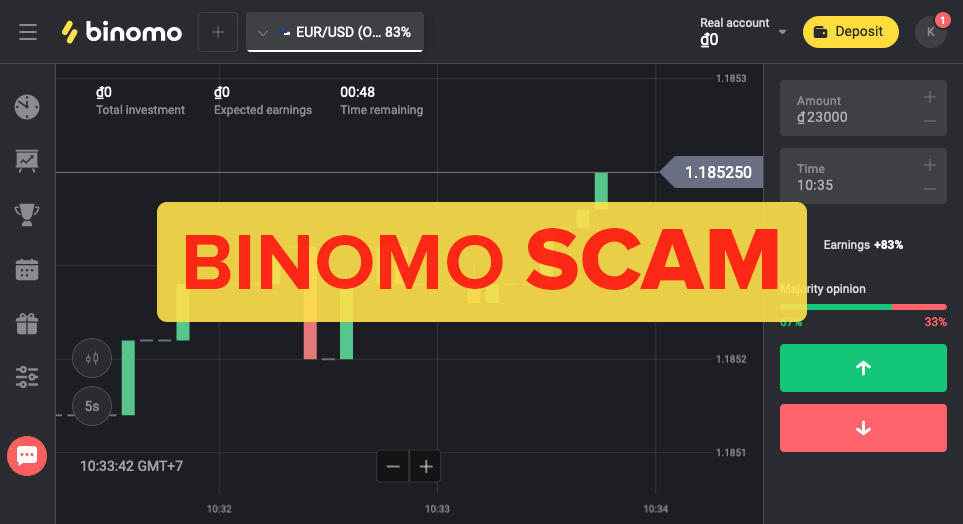Engaging in day trading presents an exciting opportunity to harness the potential of the stock market and cultivate your financial resources online. It revolves around the swift buying and selling of stocks within a single day, capitalizing on fleeting price fluctuations.
However, day trading, while offering the prospect of a steady income stream, also carries substantial risks. It is crucial to comprehend what to expect before embarking on this journey for a successful day trading venture.
This comprehensive guide is designed to furnish you with the essential knowledge needed to commence your day trading expedition. We will delve into the core principles of day trading, guide you in selecting a suitable broker, explore various day trading strategies, and help you identify the indispensable tools and resources.
Moreover, we will share valuable insights on risk management and profit optimization. By the time you finish this guide, you will possess the confidence and expertise required to embark on your day trading pursuits.

Revealing the Essence of Day Trading
Day trading encompasses the practice of purchasing and selling financial instruments within the same trading day. Day traders aim to capitalize on short-term price fluctuations to secure profits. Although stocks are the most common asset class for day trading, this strategy can be applied across various markets, including forex, options, futures, and cryptocurrencies.
Day trading is inherently speculative and carries a significant risk factor. Successful day traders must adeptly manage these risks. Numerous day trading strategies are at your disposal, catering to different trading styles and risk tolerance levels.
Register Olymp Trade & Get Free $10,000 Get $10,000 free for newbies
Exploring the Mechanics of Day Trading
In day trading, traders frequently enter and exit positions throughout the trading day. This approach necessitates swift decision-making and execution. Achieving success in day trading depends on identifying favorable market conditions and implementing a well-defined trading strategy for entry and exit points.
The primary objective of day trading is to profit from small price movements within the market. To attain this goal, you must have a profound understanding of market dynamics and the ability to adapt to evolving conditions.
Prerequisites for a Successful Day Trading Journey
Before embarking on your day trading adventure, you must address several prerequisites:
1. Obtain a Computer With a Reliable Internet Connection
Efficient day trading relies on a dependable computer with a high-speed internet connection. Timely execution of trades hinges on a fast and stable internet connection.
2. Select an Online Broker Wisely
The selection of the right online broker is critical. Key factors to consider include fee structures, user-friendly trading platforms, a diverse range of tradable products, responsive customer service, and robust research tools.
3. Develop a Well-Structured Trading Strategy
A well-designed trading strategy serves as the foundation. Multiple day trading strategies are available, such as momentum trading, swing trading, scalping, range trading, and position trading. Research and choose a strategy that aligns with your trading style and risk tolerance.
4. Secure an Adequate Capital
Sufficient capital is essential to cover trading costs and generate profits. Evaluate the capital requirements of your chosen trading strategy and ensure you have an appropriate amount of risk capital available.
5. Establish a Comprehensive Risk Management Plan
Implementing a comprehensive risk management plan is vital to safeguard your capital. This plan should outline your risk tolerance, stop-loss levels, and position sizing strategies.
Exploring the Benefits and Opportunities in Day Trading
Day trading offers numerous advantages for those considering this path:
1. Potential for Significant Profits
Day trading’s focus on short-term price movements can yield substantial profits. Capitalizing on market volatility enables traders to benefit from quick price shifts.
2. Independence and Flexibility
Day trading empowers traders with autonomy and flexibility. You determine when and how you trade, accommodating various lifestyles and schedules.
3. Geographic Freedom
With an internet connection, day trading can be conducted from anywhere globally. You are not confined to a specific location, enabling you to trade from the comfort of your choice.
4. Lower Capital Requirements
Day trading typically requires less initial capital compared to other forms of trading or investment. This accessibility broadens participation.
5. Accelerated Learning Curve
Learning the fundamentals of day trading can be achieved in a relatively short time. Abundant educational resources are available online, expediting the learning process.
6. Complete Autonomy Over Trades
Day traders maintain full control over their trading decisions, from entry to exit. This autonomy allows for personalized trading approaches.
7. Profiting in Volatile Markets
Day traders thrive in volatile markets, capitalizing on rapid price fluctuations. This adaptability to market conditions can lead to substantial gains.
8. Tailored Trading Schedule
Day trading’s flexibility extends to trading hours, enabling individuals to adapt their trading activities around their existing commitments.
9. Portfolio Diversification
Day trading facilitates diversification by enabling traders to invest in various assets, spreading risk, and enhancing the potential for profit.
10. Immediate Commencement
Unlike traditional investments, day trading offers the advantage of immediate initiation. Traders can execute trades and observe results promptly.
Register Olymp Trade & Get Free $10,000 Get $10,000 free for newbies
Addressing the Inherent Risks and Challenges of Day Trading
While day trading offers significant potential rewards, it also carries inherent risks:
1. High Leverage Can Result in Substantial Losses
Day trading often involves high leverage, which magnifies gains but also amplifies losses if trades move against the trader.
2. Limited Diversification
Concentrating on a limited number of assets can expose day traders to higher risk if those assets experience adverse price movements.
3. Lack of Market Knowledge
Insufficient understanding of the markets and trading strategies can lead to costly errors for day traders.
4. Elevated Transaction Costs
Commissions and fees associated with frequent trading can significantly impact overall profitability.
5. Emotional Decision-Making
Emotional decision-making, driven by fear or greed, can result in irrational choices and substantial losses.
6. Tax Considerations
Day trading may have distinct tax implications, and traders must navigate tax rules to minimize their liabilities.
7. Unpredictable Market Conditions
Market conditions can change rapidly, and even experienced day traders are not immune to losses when markets behave unexpectedly.
8. Limited Liquidity
Exiting positions swiftly can be challenging in less liquid markets, potentially leading to larger losses.
9. Spread Impact
The spread, representing the difference between the bid and ask price of an asset, can erode profits, particularly in high-frequency trading.
10. Margin Calls
Traders using margin may face margin calls, necessitating additional capital to cover losses. Failing to meet margin calls can result in position liquidation and losses.
Answering Common Questions About Day Trading
Here are responses to some frequently asked questions about day trading:
How to Commence Day Trading?
To embark on day trading, open an account with a reputable broker, deposit funds, and acquaint yourself with technical analysis and various trading strategies.
Is Day Trading Feasible With Limited Capital?
Day trading with a small account is possible but comes with higher risk. Traders may need to leverage more to compensate for limited capital.
Is Day Trading Worth Pursuing?
The worth of day trading hinges on discipline and strategy. While it offers substantial profit potential, it carries high risk, and losses are possible.
What Constitutes the Best Day Trading Strategy?
There is no one-size-fits-all strategy. The best strategy varies among traders and should align with your trading style and risk tolerance.
How Much Capital Is Required to Commence Day Trading?
You will typically need a minimum of $500 to start day trading, although having more capital provides greater flexibility and risk management.
Evaluating the Pros and Cons of Day Trading
Advantages of Day Trading
Potential for Swift Profits: Day trading’s focus on short-term trading can lead to rapid profit accumulation.
Market Flexibility: Day traders can participate in various markets, including stocks, forex, options, futures, and cryptocurrencies.
Opportunity in Both Rising and Falling Markets: Day traders can profit from price movements in either direction.
Disadvantages of Day Trading
High-Risk Factor: Rapid market fluctuations and leveraged positions expose day traders to substantial risk.
Constant Monitoring Required: Day traders must closely monitor markets and make quick decisions.
Losses Can Exceed Initial Investments: The use of leverage can lead to losses greater than the initial capital invested.




